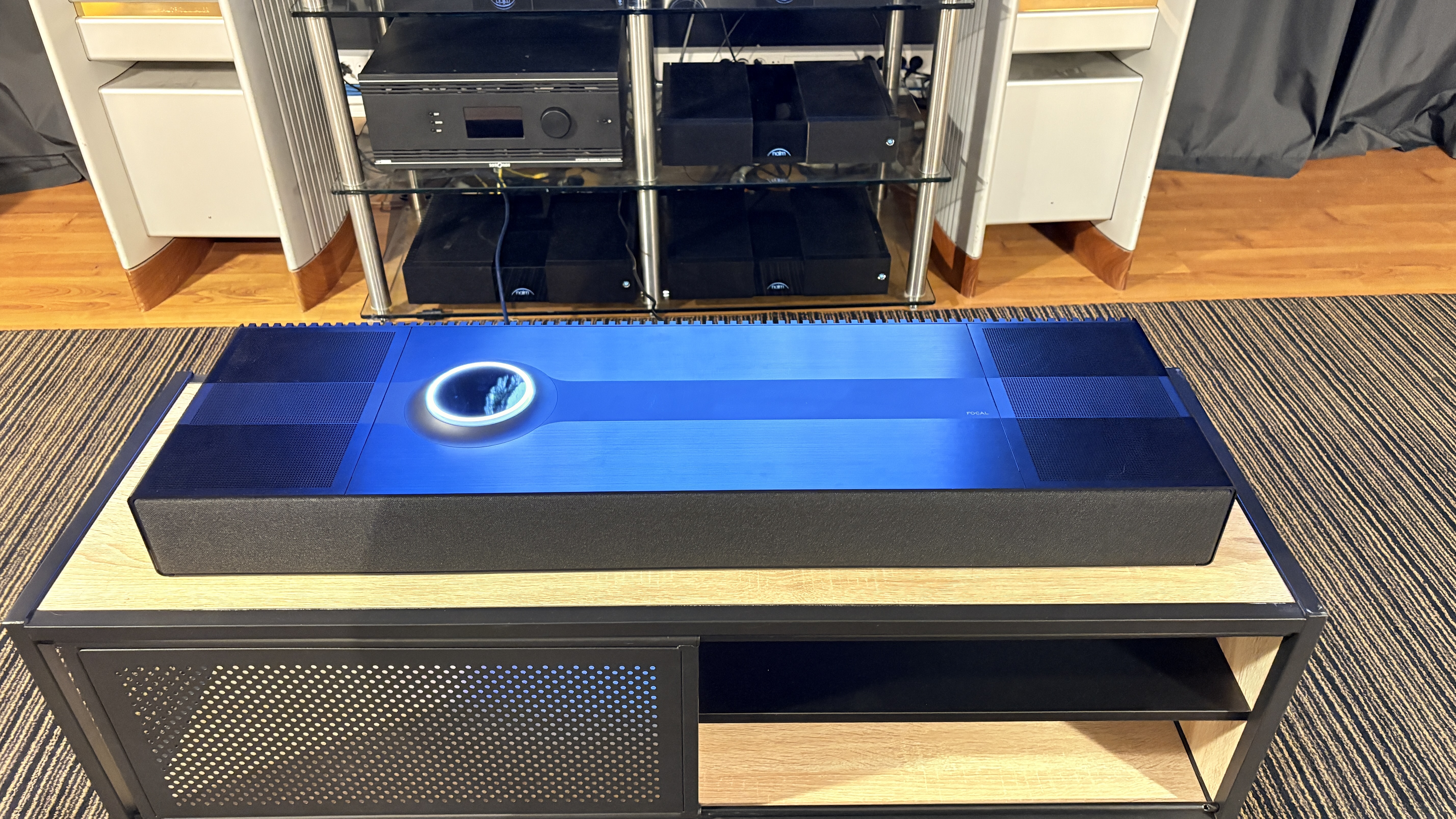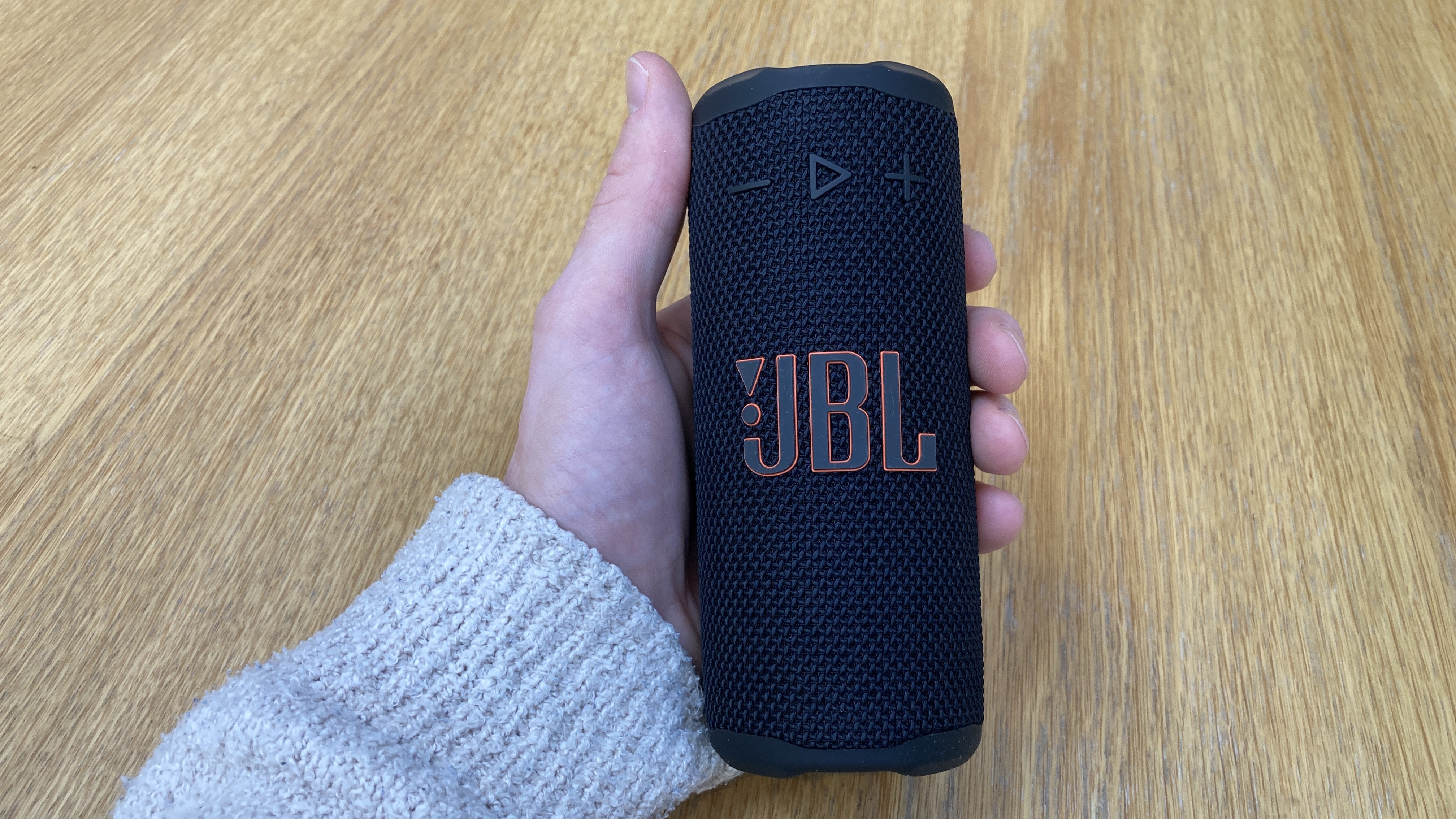Early Verdict
Focal and Naim's all-in-one system wants to give us the best of both worlds – the respective expertise of both brands, of both hi-fi and home cinema, of hi-res and Atmos. From our initial look and listen, the Mu-so Helka seems like a powerful-sounding, lifestyle-friendly and versatile product with plenty of clever technology in one unit – but its target audience will need deep pockets and ample space when considering it. We are keen to find out the full extent of the its audio talents once we have a review sample in our test rooms.
Pros
- +
Large-scaled, powerful sound
- +
Impressive Dolby Atmos effect
- +
Premium build-quality and design
- +
Strong streaming features
Cons
- -
Rather large and heavy
- -
Will need considerable shelf space to accommodate it, especially if using with a TV
- -
Need proper testing time to fully evaluate its sound performance
Why you can trust What Hi-Fi?
“It’s not just a soundbar.”
Referencing Belgian surrealist René Magritte’s famous The Treachery of Images painting of a pipe, Focal’s CEO Cedrick Boutonet encourages us not to think of the new Focal Mu-so Hekla as merely a soundbar. Despite the introduction of Dolby Atmos and multi-channel drivers, the product retains plenty of its hi-fi credentials – and feels, during our initial preview ahead of its launch, like a multi-faceted product that mirrors the multi-faceted company and collaboration behind it.
The Mu-so Hekla is a Focal and Naim product. The two brands merged in 2011, but only recently has the first true product collaboration, combining Focal’s speaker acoustic technology with Naim’s expertise in electronics and amplification, been created: the high-end Diva Utopia active wireless stereo speaker system.
It has proved a strong start, says Focal’s representatives. The Mu-so Hekla is the second product that Focal and Naim have made together, and once again sees the two brands pooling their audio expertise and market knowledge into a product that aims to shake off the shackles of traditional hi-fi and target a more luxury-minded, modern audience that values high-end lifestyle design, convenience and audio quality.
We got a first look at and listen to the new Hekla system at Focal’s headquarters in St. Etienne, France, ahead of its launch. Below are our first impressions of the product, as well as insights from the product team at Focal.
What's in a Naim?

Long-time readers and audio fans will recognise the Mu-so name from Naim’s well-regarded line of wireless speakers that started in 2014. It boasts such products as the five-star and What Hi-Fi? Award winning Naim Mu-so, Mu-so 2 (2019) and Mu-so Qb 2nd Gen models. These products wowed us with their classy, premium design and a punchy, detailed and dynamic sound that elevated them beyond the humble wireless speaker into genuine ‘hi-fi’ quality.
The new Hekla product expands upon the wireless stereo core to deliver even greater immersion and better integration with your home cinema, says Focal. The brand’s representatives are keen to emphasise that this is both a Focal and Naim product, but they couldn’t put both brand names on the product, so had to choose one.
The latest hi-fi, home cinema and tech news, reviews, buying advice and deals, direct to your inbox.
They chose Focal, as the French brand is a stronger name in the AV (audio-visual) world, with home cinema products such as subwoofers and Dolby Atmos speakers in its line-up. Naim, in contrast, is purely hi-fi.
Price & availability

The Focal Mu-so Hekla launches today (6th November 2025), exclusively in South Korea and China at first. It will be available globally from Q1 of 2026. Hekla will be sold only in authorised Focal Powered By Naim retailers, alongside Diva Utopia and the bigger Diva Utopia Mezza speaker systems.
That exclusive nature is reflected in the cost: the Mu-so Hekla can be yours for a significant £3000 / $3600 / €3300. That’s higher than the all-in-one music systems we have encountered from Ruark and Cambridge Audio, as well as the premium Dolby Atmos soundbars from KEF and Yamaha we have tested recently.
As with Diva Utopia, it’s clear that Focal is positioning the Hekla system as a luxury proposition as well as establishing the brand in emerging new markets beyond its (and Naim’s) core European home market.
Build & design
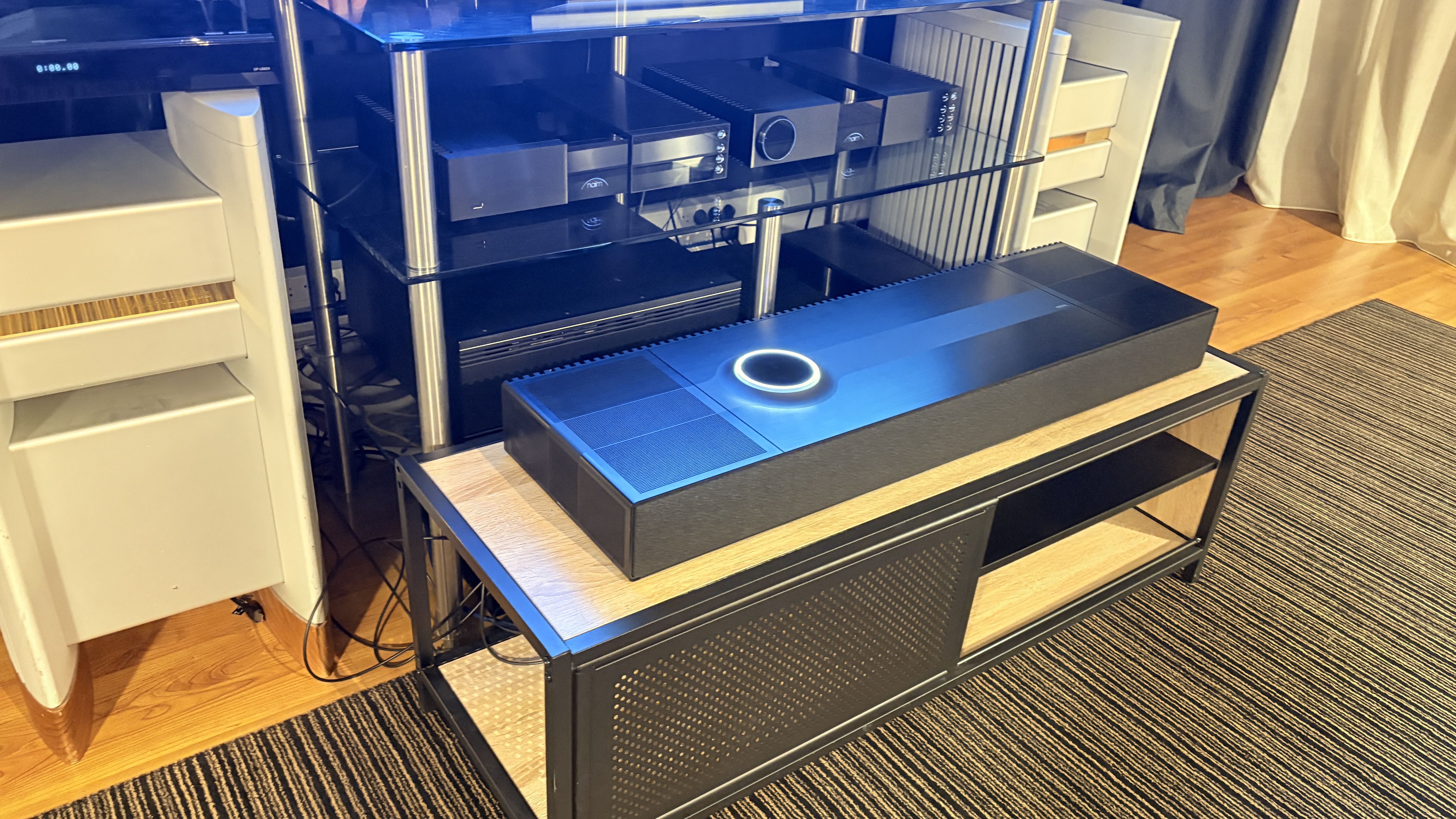
The Focal Mu-so Hekla is an all-in-one wireless system with 15 drivers, boasting hi-res file compatibility and support for popular music-streaming services, along with Dolby Atmos support up to 7.1.2 channels and HDMI eARC.
The Hekla is designed to “replace bulky multi-speaker setups”, offering room-filling, cinematic sound from a relatively compact product, that can be easily integrated in any living room space.
All-in-one systems have been gaining in popularity in the hi-fi world, with recent products to hit the market including the Ruark Audio R410 and the Cambridge Audio Evo One. These combine amplification, multiple speaker drivers, hi-res streaming support, even a built-in phono stage, into one large-ish, versatile box that is aimed at being suited your modern lifestyle needs as well as your musical ones.
Even the Naim Mu-so 2 could be considered an all-in-one system as much as a wireless speaker, with many owners using it as a ‘soundbar’ or as TV speakers thanks to the HDMI ARC input. These are primarily stereo products however; while the HDMI inclusion means you can use them with a TV, these type of music systems don’t tend to have Dolby Atmos or deliver true multi-channel performance.
The KEF XIO, on the other hand, is a Dolby Atmos soundbar, and also includes hi-res streaming support. It could be more of a key rival for the Mu-so Hekla than the stereo-only systems we’ve encountered so far.
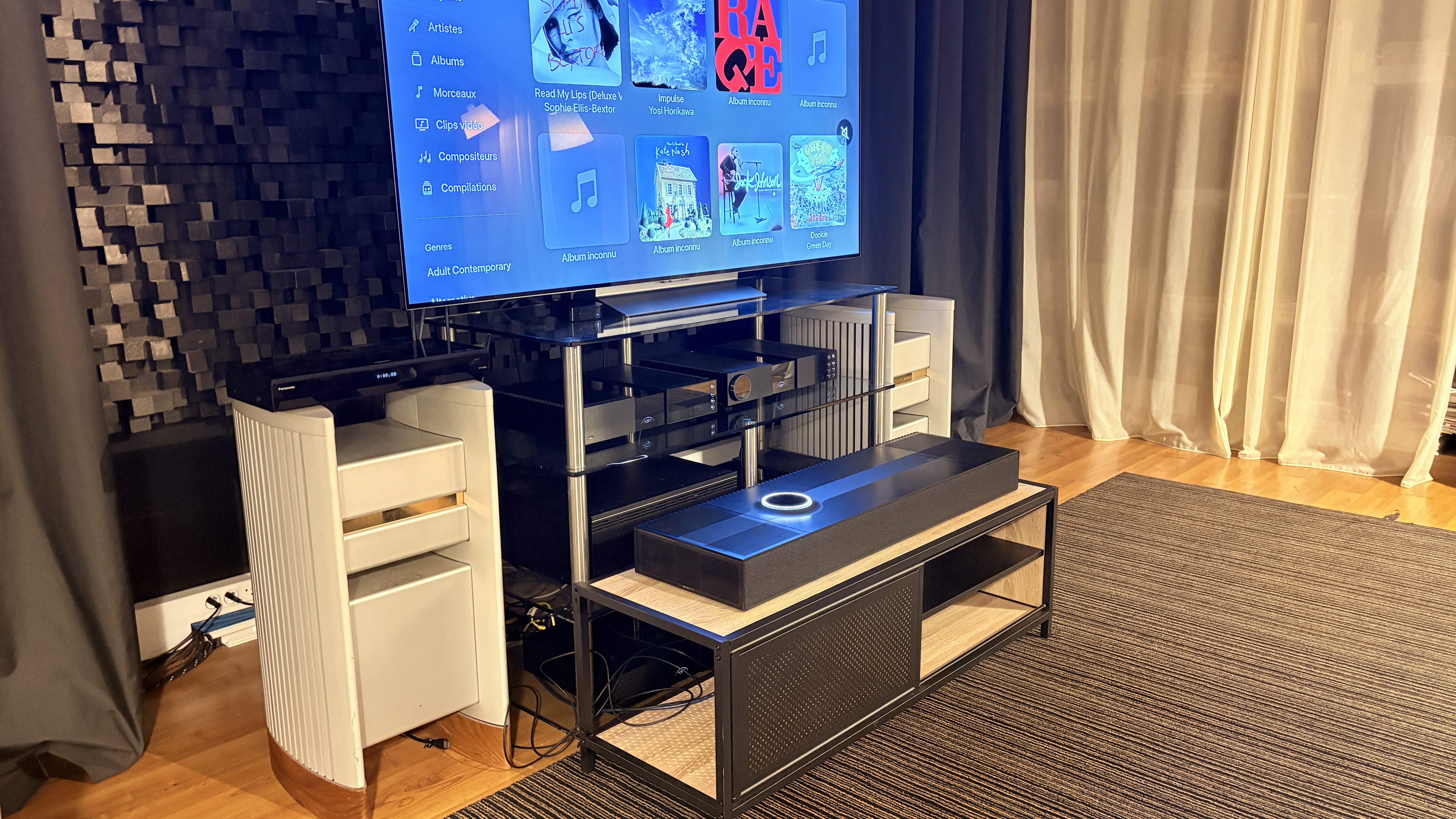
Regardless of whether the Hekla is a soundbar or not, one thing is indisputable: it is huge. The product is one metre long, 29.5cm deep and 11.8cm high, and it weighs 15.5kg. It will need a piece of furniture of considerable size and strength to support it.
We imagine most people will place it on a sideboard as a standlone music player, or under their TV on an open shelf – provided the TV is wall-mounted of course. The Hekla isn’t designed to be tucked away, and you will need to give it ample space around and above it so that the array of speakers aren’t obstructed.
Whereas the even longer KEF XIO soundbar has a flatter, shallower profile and can be mounted on the wall for easy TV use, you definitely cannot wall mount a Hekla. Focal seems happy to leave it up to the buyer to decide where the system will go in their house. We suspect a large proportion of owners will aim to place it close to their TV as possible to take advantage of those Dolby Atmos features.
“We are Focal and Naim, so audio is always first.”
So why not make it slimmer to be more soundbar-y? The Hekla’s shape is dictated by both brands’ insistence on prioritising acoustics. It simply has to be this large and capacious so that all the required drivers, electronics and acoustic technology fit into the box to deliver the high-quality sound and immersion that matched their high expectations.
“When we created this product, yes, we wanted a home cinema experience; but above all, we wanted to keep our hi-fi signature, specifically for music,” says a Focal representative.
“We are Focal and Naim, so audio is always first.”
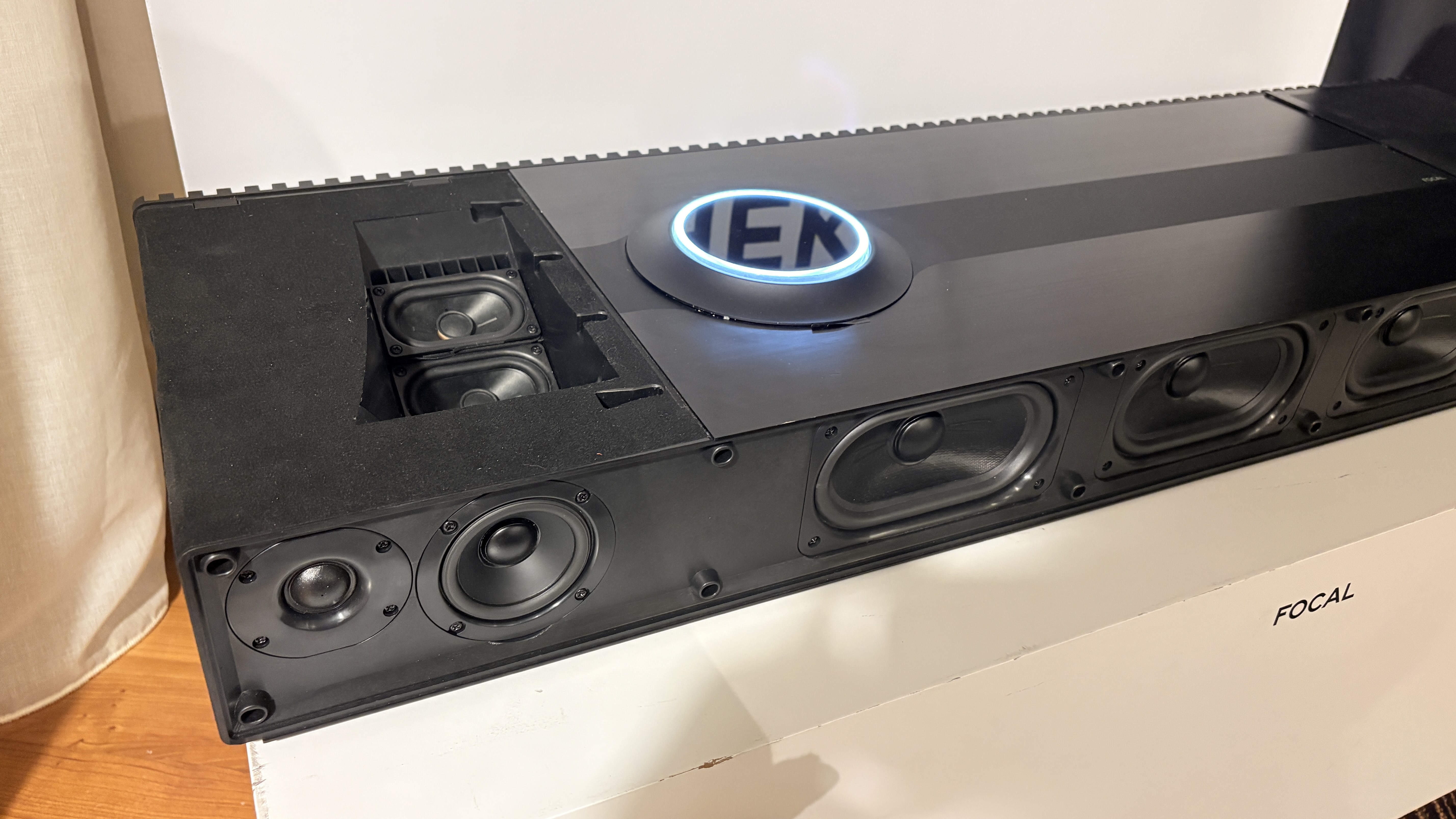
There are 15 drivers in total, with each powered by its own Class D amplifier. There are seven drivers on the front (three woofers, two midrange and two tweeters), two full-range drivers each on either side of the unit, and four upward-firing drivers at the top of the unit.
All together, it outputs a claimed 660 watts of power (60W each to the front three drivers, 40W each to the remaining 12 drivers).
The electronics (streaming and amplification) are all designed by Naim. Steve Sells, the engineer behind the original Mu-so and the flagship Naim Statement amplifier, was also involved in the development of this Mu-so Hekla.
There are elements that have carried over from the Mu-so – it starts to makes pretty good sense as to why that range name is included here. Looking at it from above, you can see the core centre of the unit as being recognisably “Mu-so”, while that gorgeous illuminated control dial returns at the top of the unit.

The unit is clad in aluminium (the same used in the Naim 200/300/Statement products), but the design has been updated from the original Mu-so: there are built-in metal grilles covering the sides and upward-firing speakers that meld into the main body, while the front grille is fairly plain compared with the swooped designs of the old Mu-so.
The Hekla is available only in an all-black finish – the idea is for the unit to disappear in a dark room (you can also turn off the LED illumination surrounding the control dial) for ultimate immersion in what you are watching or listening to.
The unit exudes a high level of build quality and luxury ambitions. From the heat sinks at the back, to the sandblasted aluminium finish and that beautiful control dial – it all feels high-end to the touch. The control dial is as reactive and bright as we remember it on the Mu-so 2. For its rather high-end price point, the Hekla certainly looks and feels worthy of its billing.
In fairness, the Mu-so 2 is also a substantial, high-quality product that launched at £1299 and is now around £899, which remains pretty high-end for “just” a wireless speaker.
Features

As with any Naim streaming product, as well as with the Focal Diva Utopia, you get the full complement of streaming-service support and high-resolution file compatibility. Tidal, Qobuz and Spotify – and their Connect versions – are on board, as are AirPlay 2, Google Cast and Bluetooth (standard AAC and SBC codecs only) for easy streaming from your devices. UPnP streaming is also on board, meaning you can play stored files from connected hard drives.
Hekla supports up to 32-bit/384kHz PCM and DSD128 files, and it can also connect with other compatible Focal/Naim streaming products that use the same Focal & Naim app and streaming platform to create a multi-room system. We are told you can even connect the Mu-so Hekla to the existing Mu-so 2.
Physical connections are kept at a bare minimum: the all-important HDMI eARC input, an optical input, and wired ethernet port; there’s a pair of RCA outputs to add on a subwoofer. That’s it. You can connect your TV, CD player, Blu-ray or games console; but unlike other do-it-all modern systems, there is no built-in phono stage. The original Mu-so didn’t either, preferring to focus on Naim’s strong digital streaming platform rather than trying to appease retro vinyl fans.

You can listen to the Hekla in stereo mode, as well as upmix it to 7.1.2-channel for a more immersive experience. Additionally, Focal’s ADAPT (Adaptative Acoustic Personal Tuning) room-calibration technology lets you optimise the Hekla’s sound to your room’s acoustics and configuration. All of this can be done through the Focal & Naim control app from your smartphone or tablet.
There are also two modes to choose from for your immersion flavour: Dolby mode or the new Naim/Focal-developed Sphere mode. Each offers a solution to deliver an optimised immersive experience to your listening space.
The Sphere mode uses beam-forming technology to bounce sound reflections from all the Hekla’s drivers off the walls and ceilings, to create the optimised experience for up to five people (i.e. five different listening positions) in the listening space. Focal says the Sphere mode works best in rooms that have some kind of acoustic treatment.
If your room doesn't have any acoustic treatment, the Dolby mode is recommended instead. This uses only the front drivers to optimise to a single listening spot.
We are told there are further movie, music and night modes to select, while users will be prompted to calibrate the Hekla and pick a mode during the initial set up. While we weren't able to change the modes and calibrate the rooms ourselves doing the demo, it's something we are keen to find out more about when we have our own review sample to play with.
Sound
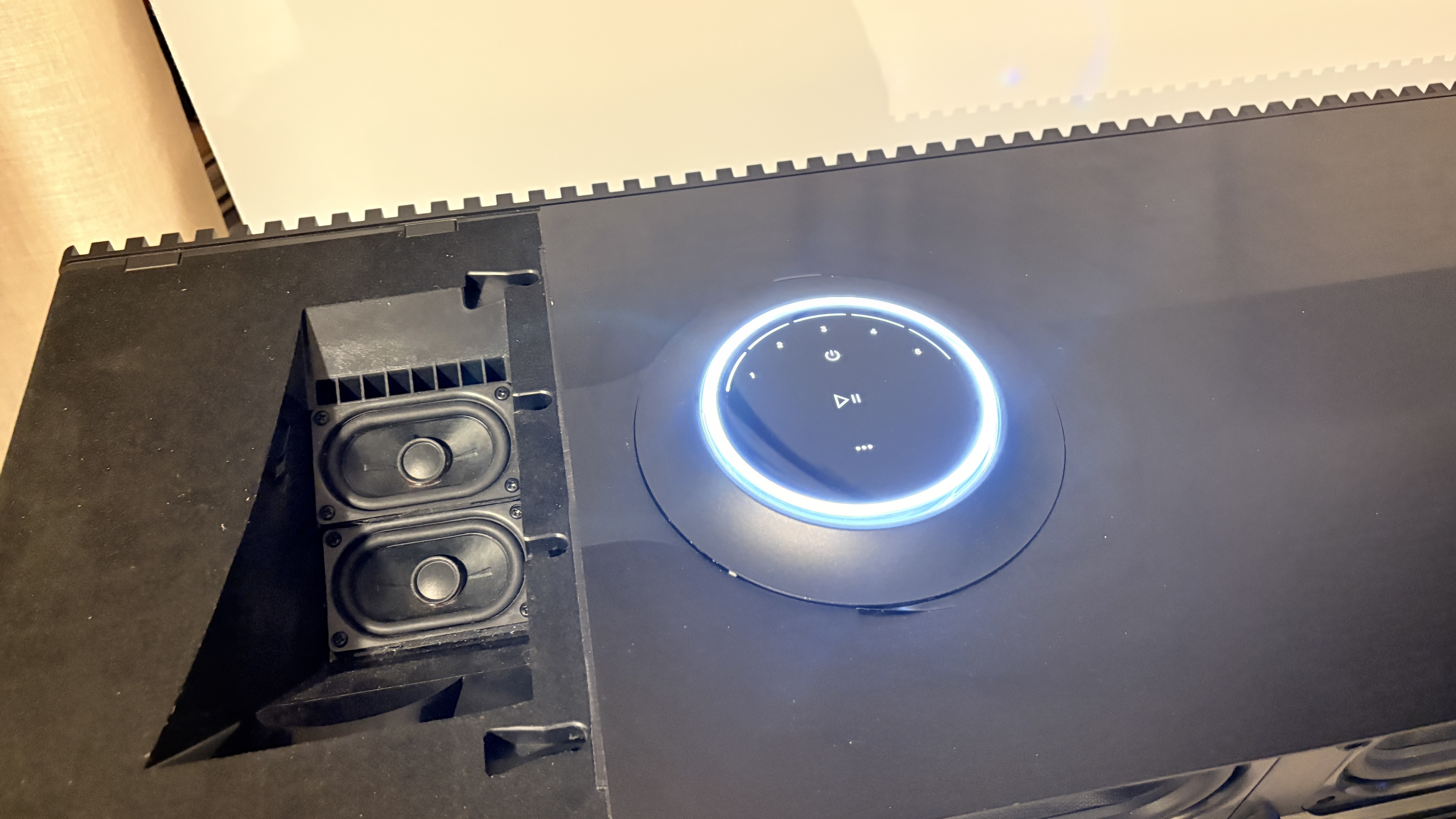
During our demo in Focal’s R&D testing room (which is past a very large anechoic chamber), we are played a variety of music and movie excerpts, with Dolby Atmos clips being played through a Panasonic Blu-ray player connected to a TV, while songs were streamed over Apple Music.
We should state here that this is an unfamiliar listening environment for us, so it is hard to make any definitive judgements about sound quality – so we can share only our first impressions and general observations from the initial demo. The listening room is fairly large, with a decent amount of acoustic treatment – acoustic panels, diffusers, long curtains with shelves full of books behind them – and doesn’t sound overly damp.
We start with the very familiar Amaze and Leaf clips from the Dolby Atmos test disc. The first – and overriding – impression we have throughout the demo is of how large-scaled and powerful the Hekla sounds. The soundstage feels wide and spacious, and it is very clear and easy to track the movement of the autumn leaves and the weight of wind blowing around us – the sense of height feels convincing, too.
The punctuating gunfire in the bombing scene from the film Unbroken sounds precise and detailed; the feeling of solidity and substantial power behind each note and effect is quite visceral. This is a system that doesn’t pull any punches – it seems to have a forthright character.
Switching to music tracks, Boris Blank’s ambient/electronic track Time Bridges similarly fills the demo room with weighty bass notes, a well-realised soundstage and ample space (in terms of width and depth) for all the musical elements to flourish. There is a good amount of texture and body to the trumpet being played in A Thousand Kisses Deep (Till Bronner and Dieter Ilg), and throughout the demo, the system seems to have no trouble being pushed to loud volumes, whether listening to music or Atmos clips.
Geoff Castellucci’s incredibly deep, rumbling vocals on his rendition of The Sound of Silence does a great job of showing off the Hekla’s low-end prowess in the demo – it certainly sounds cavernously deep, with the rumbles being felt as well as heard.
The demo also shows off how a stereo track – such as Henry Mancini’s Lujon – can be upmixed to deliver a more “immersive” experience. It’s not unlike switching to, say, Apple's spatial audio effect, with the track sounding wider and bigger; however we find ourselves still preferring the rhythmic cohesion and solidity of the original stereo track.
While quite a lot of our demo is spent showing off how impressive and powerful the Hekla sounds with large-scaled, dramatic tracks with a lot of bass, it’s a quieter, more natural clip of animals – a squawking magpie, a squirrel rustling about a forest floor of crisp autumn leaves, a stately deer – that gives us a hint of the system’s potentially subtler talents. The different noises of animals and their hooves and claws sound detailed, clear, subtle and still interesting on a small scale compared with the more attention-grabbing demo tracks.
It is difficult to accurately judge in a demo environment and with limited listening time just how well a system handles the finer subtleties of dynamics and rhythmic cohesion, of different recordings and of how well it communicates the emotion of a track (or a movie clip). We’ll need to hear the Hekla in more familiar surroundings of our own test rooms (and armed with our more familiar test tracks) to fully gauge its sonic talents.
Early verdict
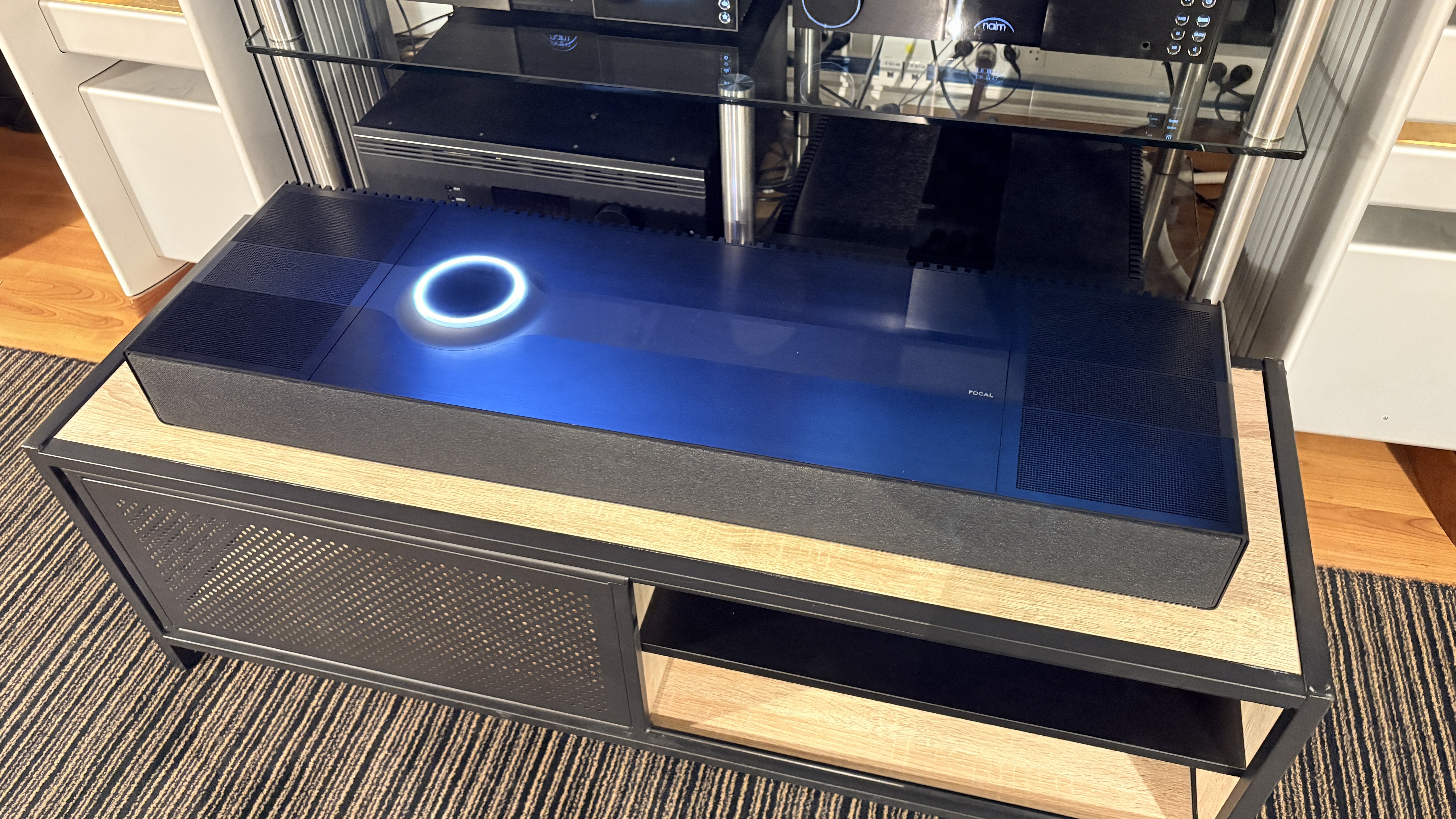
Is the Hekla a Mu-so wireless speaker system that has been expanded with Dolby Atmos features for home cinema use? Is the Hekla a Dolby Atmos soundbar that can also be used to stream hi-res music? Is the Mu-so Hekla a versatile solution for those who don’t want multiple boxes, prefer a sleek lifestyle design, that can be used for music and movies – all accessible from one unit, one app?
All of these can be true. The Hekla could be the only audio system you’ll ever need in your house if you have limited space (but not limited funds). We can certainly imagine this all-purpose, all-in-one wireless system appealing to many modern users who don't want to get into the weeds of separates hi-fi or dedicated soundbars, but who still want high quality performance.
Of the original Naim Mu-so, we said: “Such was the unique one-box offering of wireless network multi-room streaming, physical connectivity, amplification and speakers, we weren’t sure what to call it. An all-in-one hi-fi system? A streaming system? A wireless speaker?”
It is a dilemma we once again find ourselves contemplating, a decade later, with the Hekla. The Mu-so’s performance was so good, however, that it really didn’t matter what we called it, we just enjoyed listening to it and recommended it as an audio product worthwhile of your attention.
We hope we can say the same for the Mu-so Hekla.
MORE:
Read our Focal Diva Utopia review
And our Naim Mu-so 2 review
Check out the best hi-fi systems we have tested and rated

Kashfia is the Hi-Fi and Audio Editor of What Hi-Fi? and first joined the brand 13 years ago. During her time in the consumer tech industry, she has reviewed hundreds of products (including speakers, amplifiers, turntables and headphones), been to countless trade shows across the world and fallen in love with hi-fi kit much bigger than her. In her spare time, Kash can be found tending to an ever-growing houseplant collection and shooing her cat Jolene away from spinning records.
What is a hands on review?
'Hands on reviews' are a journalist's first impressions of a piece of kit based on spending some time with it. It may be just a few moments, or a few hours. The important thing is we have been able to play with it ourselves and can give you some sense of what it's like to use, even if it's only an embryonic view.
You must confirm your public display name before commenting
Please logout and then login again, you will then be prompted to enter your display name.
